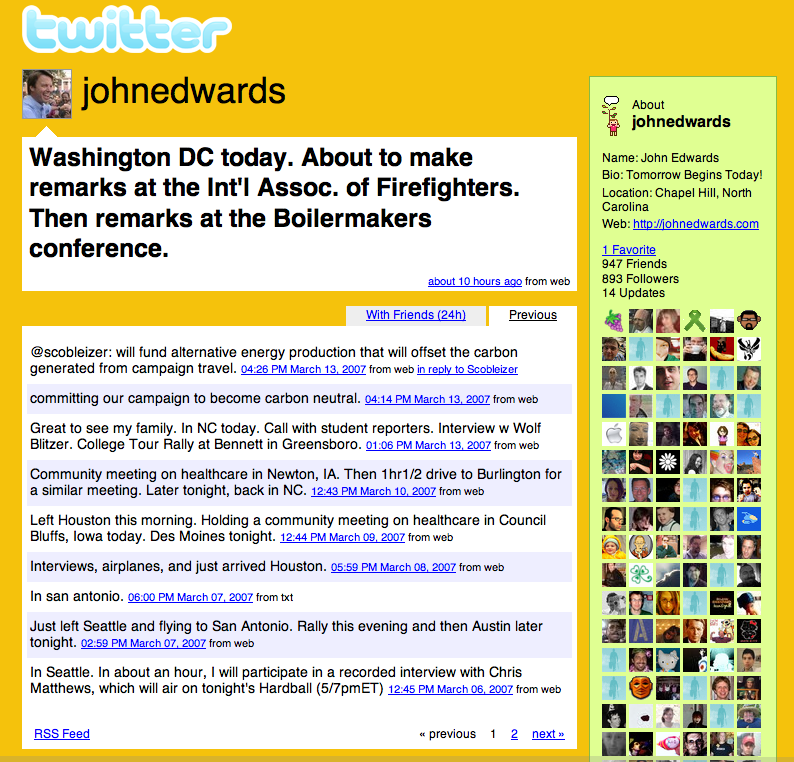MySpace vs. Websites
Monday, March 19, 2007
It seems it is becoming trendier than ever for bands to assume MySpace as a proxy for the internet and just move all their self-branding, fan-reaching, media-distributing on there. This is something I have ranted against here and here. And now I’m going to rant a little more triggered by this article about a band called Knock Knock Ginger (never heard them) in which one of them says:
“If I hear of a band, MySpace is probably the first place I go. For instance, a girl from Italy recently ordered our album and she was like, ‘I really like Canadian bands, can you recommend me some?’ And I just ended up sending her 10 MySpace links. I mean, I don’t even go to websites anymore. It has almost become the new demo.
“I mean, I don’t even go to websites anymore?”
Is this really something bands (and others) want to be pushing?
As I’ve said before, I think it’s pretty obvious that unless you are trying to avoid notice, you need to have a MySpace presence. With the amount of web traffic going through there, it’s a must. For sure.
But you should also have presence in other spaces as well. And all of those spaces, in my view, should lead users back to YOUR OWN SPACE. The one YOU own. The one no one else can wrest from your control, redesign without your permission, change the rules for, etc etc etc.
So it was with considerable delight that I read this astute piece in The Atlantic Monthly adding fuel to my fire:
Already, the most popular users, like the legendarily pneumatic Tila Tequila—friend to more than 1.5 million MySpacers—are realizing that their future is in guiding people off MySpace to their own, more robust, fully customizable personal pages. Indeed, the third rail of social media may ultimately come down to that most old-media of issues: ownership. MySpace may sell the idea of itself as being without boundaries, but in fact the digital mayhem lives within a tightly controlled environment. MySpace does not let users network meaningfully with people outside its walls, and it does not let them import some functionality that promotes or drives revenue to other corporations; for example, those newly popular “widgets” that contain text or video feeds, or games. MySpace has legitimate security reasons for prohibiting the Flash-based widgets, but the effect is also to eliminate a way for corporate competitors to lure users out of the MySpace environment. And MySpace recently announced it will no longer allow users to post videos that contain copyrighted material—hello, YouTube—much as it was already filtering out some major-label music.
Most important, users like Tila Tequila do not profit directly from the traffic they generate for the site. Indeed, the value of MySpace and the other 2.0 sites is built on their ability to monetize—through ad sales and marketing, among other streams—the traffic generated by their users. The tacit trade-off is free Web hosting, tools, and distribution. This trade-off is not in itself unfair. But, as with IM, the value proposition does not remain constant. The walled-garden attributes of MySpace and Facebook, like those of the subscriber-era AOL, can quickly become liabilities. And as the value of social-media tools becomes inevitably unsexy and commoditized, it may be only a matter of time before the Tila Tequilas of the world, inspiration for millions of page views, decide they might as well go elsewhere.
All of these social media are wonderful tools for artists to display their wares, show off their connections with other bands, and build and maintain relationships with their audience, but every band ought to have a home base that is entirely within their own purview and offers more than fans can get on any other site.





